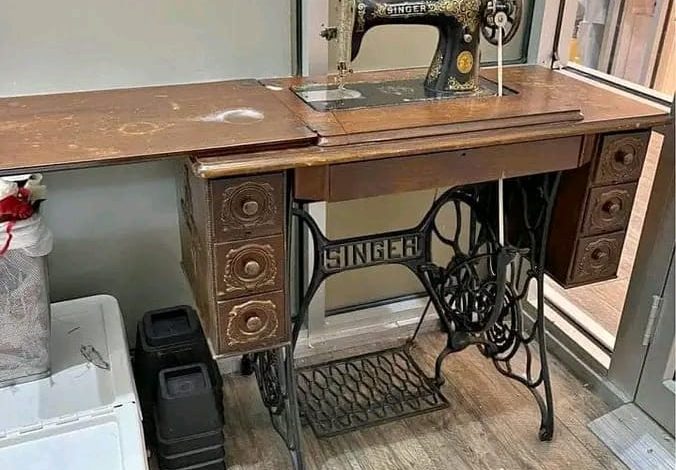
ADVERTISEMENT
A Stitch Through Time – The Legacy of Vintage Sewing Machines
Introduction:
In the era of mass production and fast fashion, seeing a vintage sewing machine is like taking a step back into history. This timeless piece of equipment, with its intricate design and sturdy construction, evokes memories of a time when clothes were handcrafted with care and precision. For many, these machines were more than just tools; they were an integral part of the household, passed down through generations, holding countless stories within their iron frames. Vintage sewing machines, like the one pictured, remind us of an era where craftsmanship and quality were held in high regard.
Body: The machine in the image, a classic Singer, is a prime example of the craftsmanship that defined the early 20th century. Known for their durability and elegance, Singer machines became household staples, and their presence was almost a rite of passage in homes across the world. These machines, often operated by a foot pedal or hand crank, required skill and patience, allowing the seamstress to control every stitch meticulously. Unlike today’s electric sewing machines, these vintage models were designed to last a lifetime, often becoming treasured family heirlooms.
Each element of this sewing machine holds historical significance. The ornate design on the body of the machine is not merely decorative; it speaks to an era when aesthetics were as important as functionality. The wooden cabinet and drawers served as a storage space for needles, threads, and fabrics, making the sewing corner a dedicated space for creation and artistry. For many women, especially in the early 1900s, these machines were a gateway to financial independence, enabling them to mend clothes, create garments, and sometimes even run small businesses from home.
ADVERTISEMENT
The impact of vintage sewing machines extends beyond their immediate function. They represent a time when people took pride in making things from scratch. In those days, clothes were not disposable; they were made to last, with every stitch a testament to the care and dedication of the person operating the machine. Owning such a machine today is like owning a piece of history, a reminder of the resilience and skill of generations past.
Conclusion: Vintage sewing machines like the Singer in the image are more than just relics; they are symbols of a bygone era of craftsmanship, resilience, and creativity. In a world that values speed and convenience, these machines stand as reminders of the patience and dedication required to create something by hand. They connect us to our past, to a time when every household had a seamstress, and every garment had a story. Owning or even just admiring one of these machines is an homage to the artistry and hard work of those who came before us. In preserving these pieces, we keep alive the spirit of craftsmanship and respect for quality that continues to inspire new generations.




